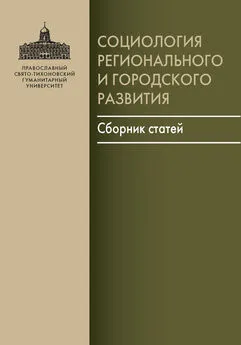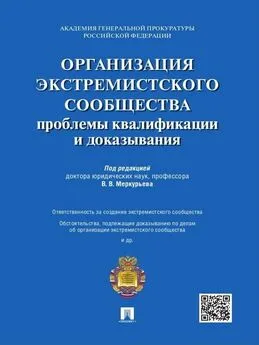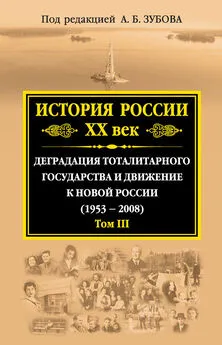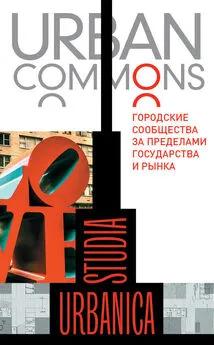Коллектив авторов - Urban commons. Городские сообщества за пределами государства и рынка [litres]
- Название:Urban commons. Городские сообщества за пределами государства и рынка [litres]
- Автор:
- Жанр:
- Издательство:Литагент НЛО
- Год:2020
- Город:Москва
- ISBN:9785444813706
- Рейтинг:
- Избранное:Добавить в избранное
-
Отзывы:
-
Ваша оценка:
Коллектив авторов - Urban commons. Городские сообщества за пределами государства и рынка [litres] краткое содержание
Urban Commons – Moving Beyond State and Market Ed. by Dellenbaugh, Mary / Kip, Markus / Bieniok, Majken / Müller, Agnes / Schwegmann, Martin
Urban commons. Городские сообщества за пределами государства и рынка [litres] - читать онлайн бесплатно ознакомительный отрывок
Интервал:
Закладка:
185
Ostrom, Governing the Commons; Остром Э. Управляя общим: эволюция институтов коллективной деятельности. М.: ИРИСЭН; Мысль, 2010.
186
Vincent Ostrom, «Polycentricity-Part 1», in Michael McGinnis, ed., Polycentricity and Local Public Economies (Ann Arbor: University of Michigan Press, 1999).
187
Dennis R. Fox, «Psychology, Ideology, Utopia, and the Commons», American Psychologist 40 (1985): 48–58; http://www.dennisfox.net/papers/commons.html (accessed 22.01.2015).
188
http://www.dennisfox.net/papers/commons.html (accessed 22.01.2015).
189
David Harvey, Rebel Cities, From the Right to the City to the Urban Revolution, Verso, 2012.
190
Ibid., 70.
191
Ibid., 83.
192
Vinay Gidwani and Amita Baviskar, «Urban Commons», Economic & Political Weekly 46, № 50 (2011): 42; Anant Maringanti, «No Estoppel: Claiming Right to the City via the Commons», Economic & Political Weekly 46, № 50 (2011): 65.
193
Kirsten Hackenbroch, The Spatiality of Livelihoods: Negotiations of Access to Public Space in Dhaka, Bangladesh (Stuttgart: Franz Steiner Verlag, 2013), 31.
194
Ibid., 31–32.
195
David Harvey, Rebel Cities: From the Right to the City to the Urban Revolution (London: Verso Books, 2012), 73.
196
Elinor Ostrom, Governing the Commons: the Evolution of Institutions for Collective Action (New York: Cambridge University Press, 1990), 90–102; Остром Э . Управляя общим: эволюция институтов коллективных действий. М.: ИРИСЭН; Мысль, 2010. С. 178–180.
197
О переосмыслении «места», к примеру, см.: Henrike Donner and Geert De Neve, «Space, Place and Globalisation», in The Meaning of the Local: Politics of Place in Urban India, Henrike Donner and Geert De Neve, eds. (New York: UCL Press, 2006). Обеспокоенность городскими общественными процессами и повседневными практиками усилилась за счет введения в оборот понятия «городской ассамбляж», о нем см.: Colin McFarlane, Learning the City: Knowledge and Translocal Assemblage (Hoboken: John Wiley & Sons, 2011). Критика концепта представлена в: Neil Brenner, «Theses on Urbanization», Public Culture 25, № 1 (2013): 85–114.
198
Arturo Escobar, «Culture Sits in Places: Reflections on Globalism and Subaltern Strategies of Localization», Political Geography 20, № 2 (2001): 170.
199
Jonathan Shapiro Anjaria and Colin McFarlane, «Conceptualising the City in South Asia», in Urban Navigations: Politics, Space and the City in South Asia, Jonathan Shapiro Anjaria and Colin McFarlane, eds. (New Delhi: Routledge, 2011), 7.
200
AbdouMaliq Simone, «People as Infrastructure: Intersecting Fragments in Johannesburg», Public Culture 16, № 3 (2004): 407.
201
Ibid., 408.
202
Ibid.
203
Ibid., 410.
204
Ibid., 427.
205
Swati Chattopadhyay, Unlearning the City (Minneapolis: University of Minnesota Press, 2012), 248.
206
Simone, «People as Infrastructure», 408.
207
Stephen Graham and Simon Marvin, Splintering Urbanism: Networked Infrastructures, Technological Mobilities and the Urban Condition (London; New York: Routledge, 2001), 388.
208
Ibid., 34–35, 281–284.
209
Manuel Castells, «Grassrooting the Space of Flows», Urban Geography 20, № 4 (1999): 297; cited in Graham and Marvin, Splintering Urbanism, 388.
210
Michel de Certeau, The Practice of Everyday Life (Berkeley; Los Angeles: University of California Press, 1984), 96. Отсылаем к рус. изд.: Де Серто М . Изобретение повседневности. СПб.: Издательство Европейского университета, 2015. 330 с. Подобно АбдуМалику Симону, де Серто подчеркивает, что власти, как правило, не видят эти пространственные практики. Джеймс Скотт стремится доказать, что невидимость – это стратегия пространственных политик как таковых. Эти инфраполитики подчиняются логике «оставления минимального количества следов за собой. Заметая следы <���…> они минимизируют риски для участников процесса». Подробнее см.: James C. Scott, Domination and the Arts of Resistance: Hidden Transcripts (New Haven: Yale University Press, 1990), 200.
211
Loraine Kennedy, «New Forms of Governance in Hyderabad: How Urban Reforms are Redefining Actors in the City», in New Forms of Urban Governance in India: Shifts, Models, Networks and Contestations, Isabelle Suzanne Antoinette Baud and Joop De Wit, eds. (New Delhi: Sage, 2008), 257.
212
Loraine Kennedy, «Regional Industrial Policies Driving Peri-Urban Dynamics in Hyderabad, India», Cities 24, № 2 (2007): 100.
213
Sangeeta Kamat, «Neoliberalism, Urbanism and the Education Economy: Producing Hyderabad as a ‘Global City’», Discourse: Studies in the Cultural Politics of Education 32, № 2 (2011): 194–195; N. Purendra Prasad and P. Raghavendra, «Healthcare Models in the Era of Medical Neo-Liberalism», Economic & Political Weekly 47, № 43 (2012): 119; Kennedy, «New Forms of Governance in Hyderabad», 257, 267.
214
Kamat, «Neoliberalism, Urbanism and the Education Economy», 188.
215
Madhav G. Badhami, «The Urban Transport Challenge in India: Considerations, Implications and Strategies», International Development Planning Review 27, № 2 (2005): 178; Angela Jain et al., Participative Processes in the Field of Traffic and Transport (Bremen: Europäischer Hochschulverlag, 2013), 2–4.
216
Katharina Manderscheid, «Automobilität als raumkonstituierendes Dispositiv der Moderne», in Die Ordnung der Räume, Henning Füller and Boris Michel, eds. (Münster: Westfälisches Dampfboot, 2012), 168.
217
Nikhil Anand, «Disconnecting Experience: Making World-Class Roads in Mumbai», Economic and Political Weekly 41, № 31 (2006): 3422.
218
К первым мигрантам можно отнести раджпутов из Марвара, джайнов, представителей родов Госвами и Агарвал – правители Хайдарабада приглашали их обосноваться в городе. Об истории города см.: Karen Leonard, «From Goswami Rajas to Goswami Caste in Hyderabad», Contributions to Indian Sociology 47, № 1 (2013): 2; Alka Patel, «Mercantile Architectural Patronage in Hyderabad, late 18th – 19th Centuries», in Indo-Muslim Cultures in Transition, Alka Patel and Karen Leonard, eds. (Leiden: Brill, 2012), 142.
219
Leonard Munn, «Sheet № 4, City Area», digitized content from the MIT Libraries’ Collection, 1915, http://dome.mit.edu/handle/1721.3/45464 (accessed Aug 22, 2013).
220
Harvey, Rebel Cities, 73.
221
Henri Lefebvre, The Production of Space (Oxford: Blackwell, 1991), 36–39; Лефевр А . Производство пространства. М.: Strelka Press, 2015. С. 43.
222
Ibid., 38.
223
Цит. по рус. изд.: Лефевр А . Производство пространства. М.: Strelka Press, 2015. С. 52.
224
Ibid., 39.
225
Там же.
226
Maringanti, «No Estoppel: Claiming Right to the City via the Commons», 66.
227
Ananya Roy, «Why India Cannot Plan its Cities: Informality, Insurgence, and the Idiom of Urbanization», Planning Theory 8, № 1 (2009): 85–86.
228
Этот концепт введен Джеймсом Холстоном в книге под аналогичным названием; совмещая «мятеж» и «гражданство», он анализирует ситуации, в которых в крупных городах формируются национально-освободительные движения, стремящиеся учредить новый порядок. К движениям «мятежного гражданства» Холстон относит «Народную армию освобождения Судана» и «Favela Rising» в Сан-Паулу. – Прим. пер.
229
Данные были собраны за семь месяцев полевой работы в Хайдарабаде (август 2012 – февраль 2013 г.). Для сбора было задействовано несколько методов, в том числе проводились нарративные интервью с обитателями, уличными торговцами, владельцами бизнесов, рикшами и т. д. Проводились экспертные интервью с представителями городских властей, картирование, анализ городских ритмов; наблюдение подкреплялись множеством неформальных бесед и разговоров. Итогом полевого периода стала открытая выставка, проходившая на территории базара и представлявшая, как идут переговоры об устройстве пространства. Эта интервенция вооружила авторов полезными интуициями на тему того, как устроено и осмыслено пространство, а также того, какие стратегии используются акторами.
230
Hackenbroch, Spatiality of Livelihoods, 255–257, 259–262.
231
Karen Leonard, «Family Firms in Hyderabad: Gujarati, Goswami, and Marwari Patterns of Adoption, Marriage, and Inheritance», Comparative Studies in Society and History 53, № 4 (2011): 830–831.
232
Karen Leonard, «The Hyderabad Political System and its Participants», The Journal of Asian Studies 30, № 3 (1971): 574.
Читать дальшеИнтервал:
Закладка:
![Обложка книги Коллектив авторов - Urban commons. Городские сообщества за пределами государства и рынка [litres]](/books/1058534/kollektiv-avtorov-urban-commons-gorodskie-soobches.webp)




![Коллектив авторов - Гражданское право. Части вторая и третья. Краткий курс [litres]](/books/1073990/kollektiv-avtorov-grazhdanskoe-pravo-chasti-vtoraya.webp)
![Коллектив авторов - Мозг и сознание [Разгадка величайшей тайны человеческого мозга] [litres]](/books/1075092/kollektiv-avtorov-mozg-i-soznanie-razgadka-velicha.webp)
![Коллектив авторов - Рыба и морепродукты. Закуски, супы, основные блюда и соусы [litres с оптимизированными иллюстрациями]](/books/1078496/kollektiv-avtorov-ryba-i-moreprodukty-zakuski-su.webp)


